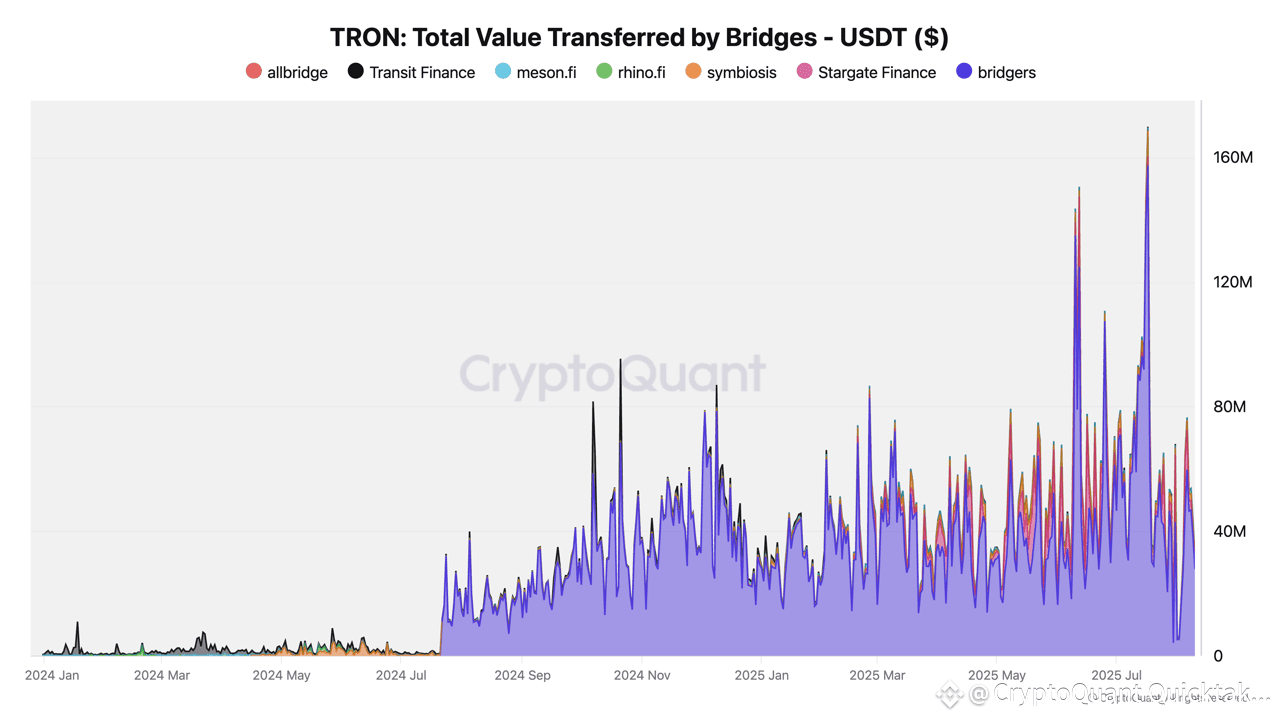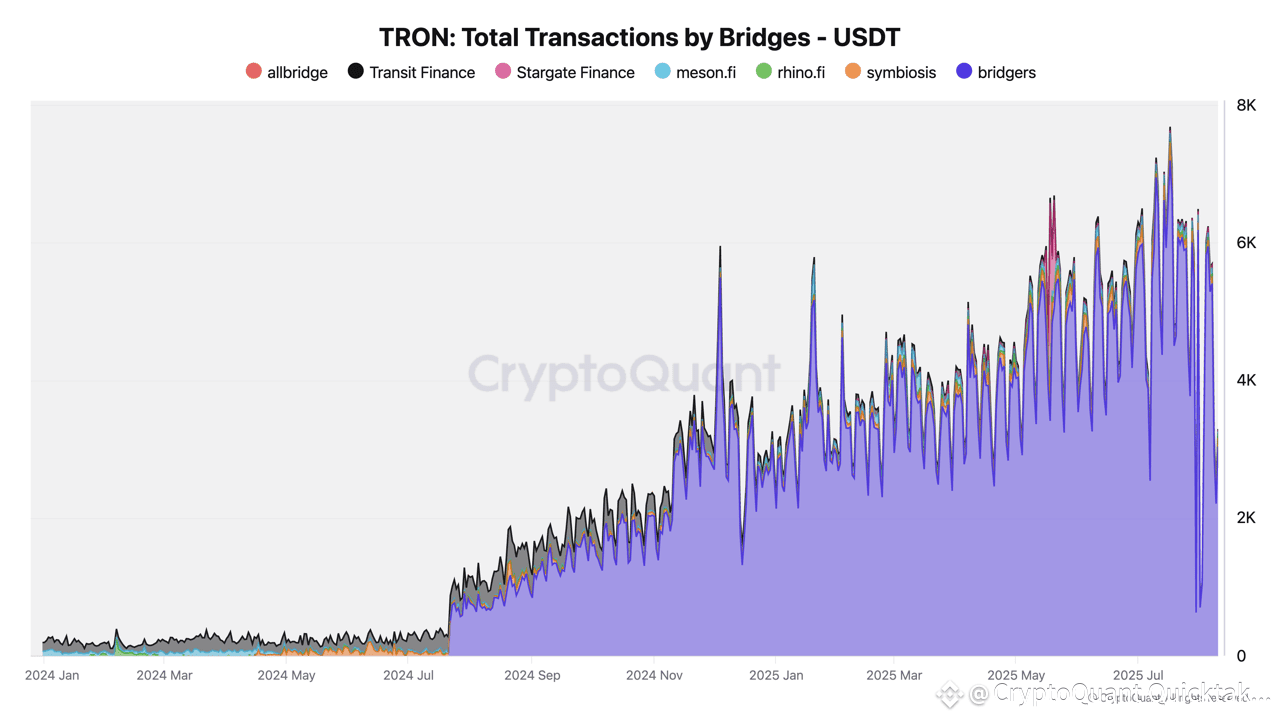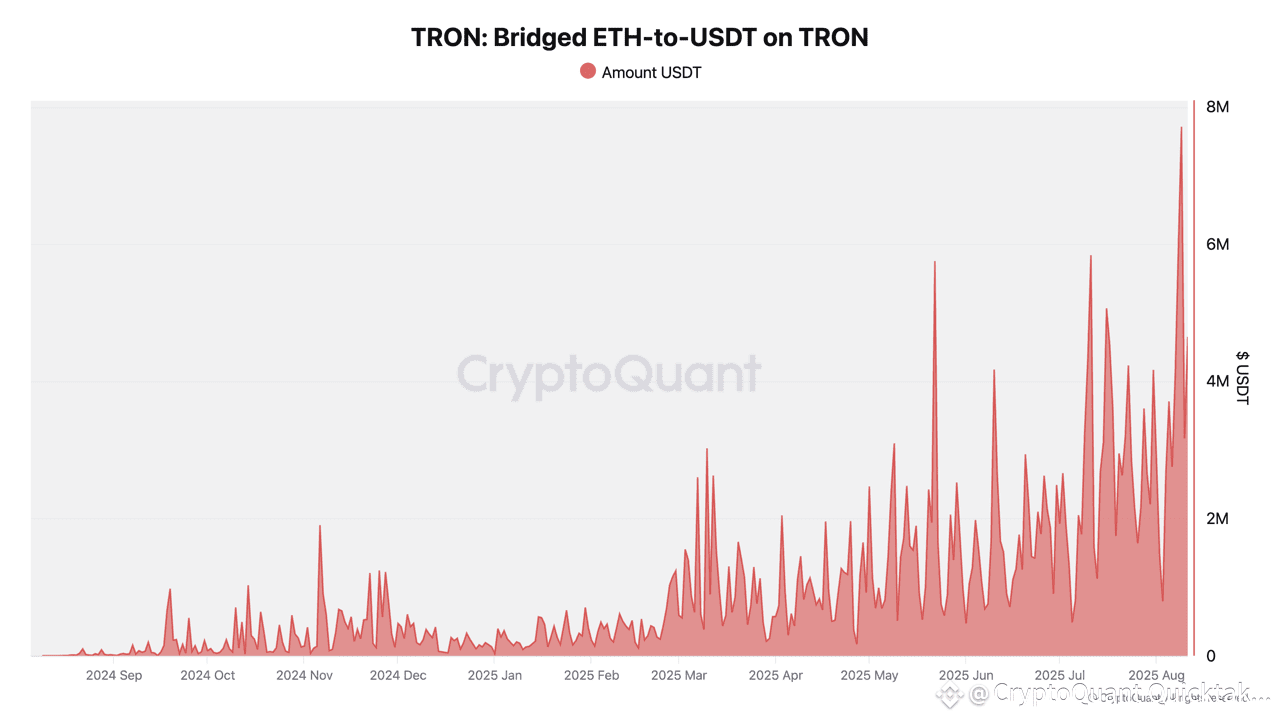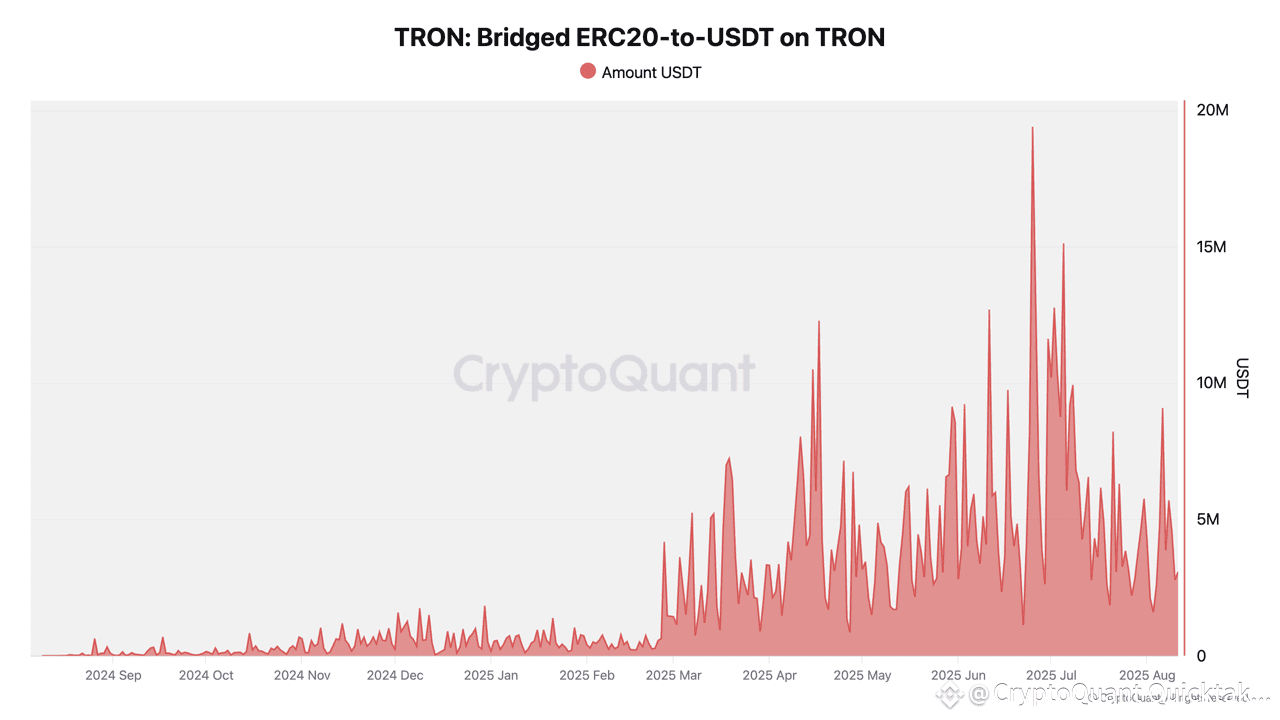A bridge is a specialized protocol or smart‑contract system that connects two separate blockchains, allowing tokens or data to move securely between them. When you “bridge” an asset, it’s typically locked or burned on the source chain and then minted or released on the destination chain, preserving overall supply while enabling cross‑chain liquidity and interoperability.
USDT bridging activity on TRON detonated in 2024 and has continued to expand in 2025. The total value bridged using USDT has grown by 76% so far in 2025 to $9.9 billion, compared to a total of $5.6 billion in 2024. Most of the bridging activity on TRON is in the form of USDT, which makes sense as the network dominates in terms of total USDT supply and transfer activity.
The number of bridging transactions and the active addresses involved are in a clear upward trend since July 2024, reaching a new all-time daily high this year. Total daily transaction hit a record-high of ~7.5K in July 17, expanding almost 19x from a year ago, while total daily active addresses hit a record-high of ~5.0K in July 18, expanding almost 31x from a year ago.
TRON is used as a liquidity layer as the amount flowing from Ethereum to TRON is higher that the amount flowing from TRON to Ethereum. The amount of ETH bridged from the Ethereum network to USDT on TRON has reached record-highs in 2025, totaling $7.7 million of USDT on August 9, while the value bridged using ERC20 tokens (mostly USDC) totaled $19 million of USDT on June 25. In contrast, the amount of TRON tokens or TRX bridged to Ethereum are relatively low compared to the flow of value transferred from Ethereum to TRON. TRX bridged to Ethereum in the form of USDT stands at only $2K today, while the value bridged in the form of TRC20 tokens stand at $700K.




Written by CQ Research



